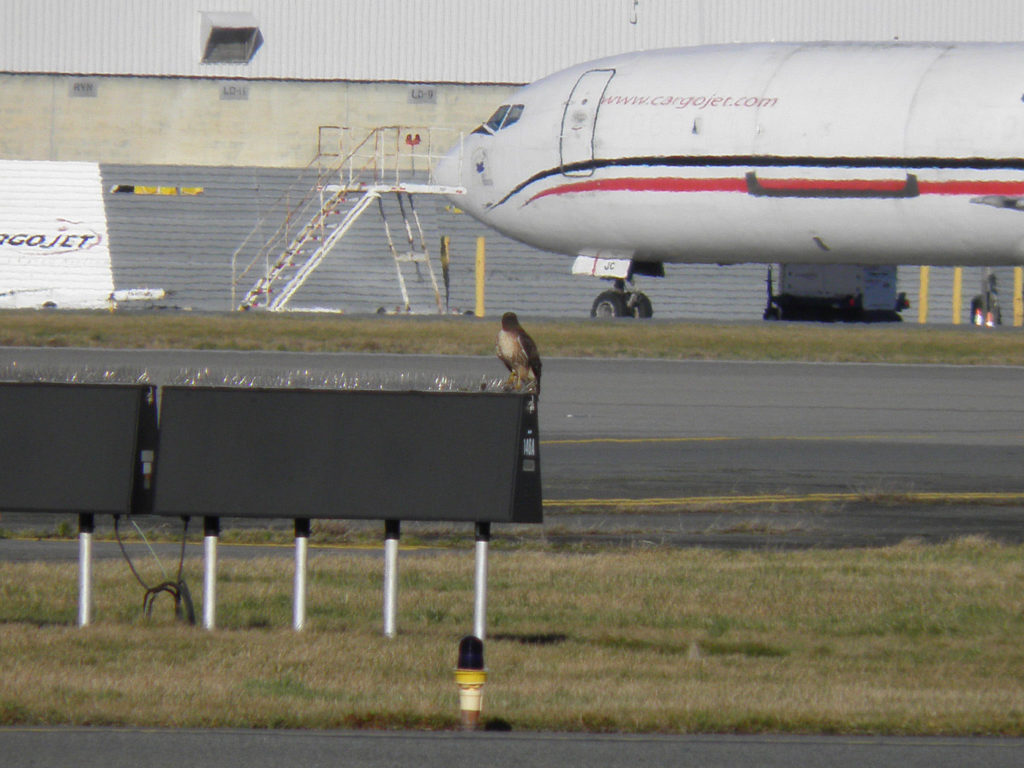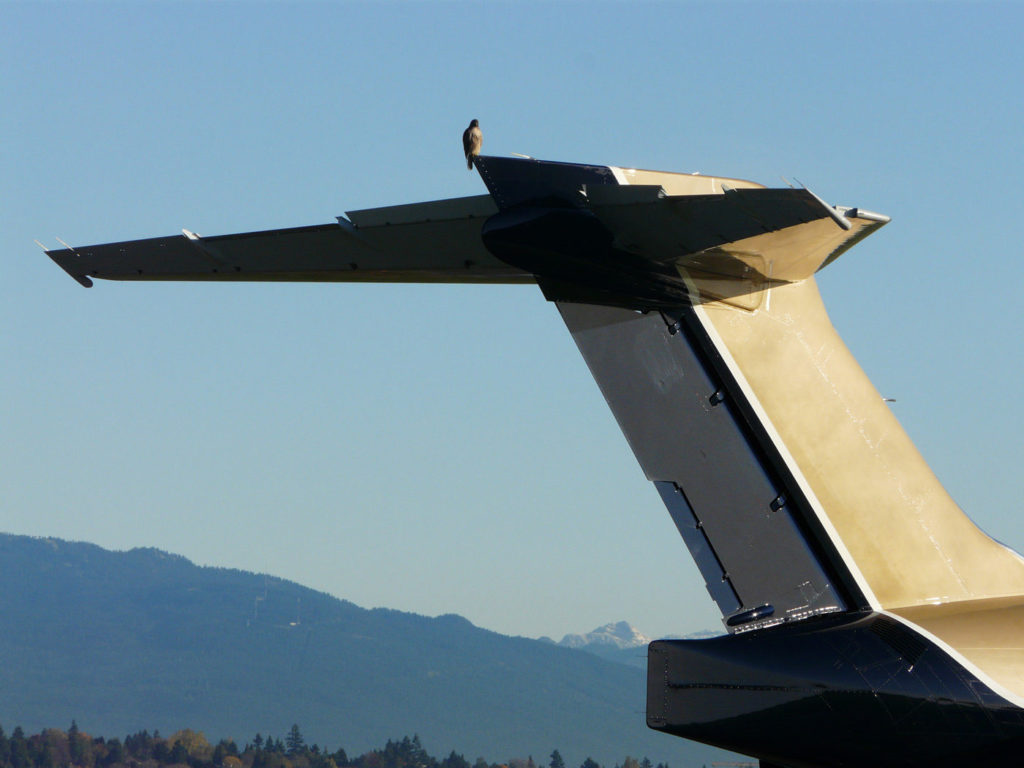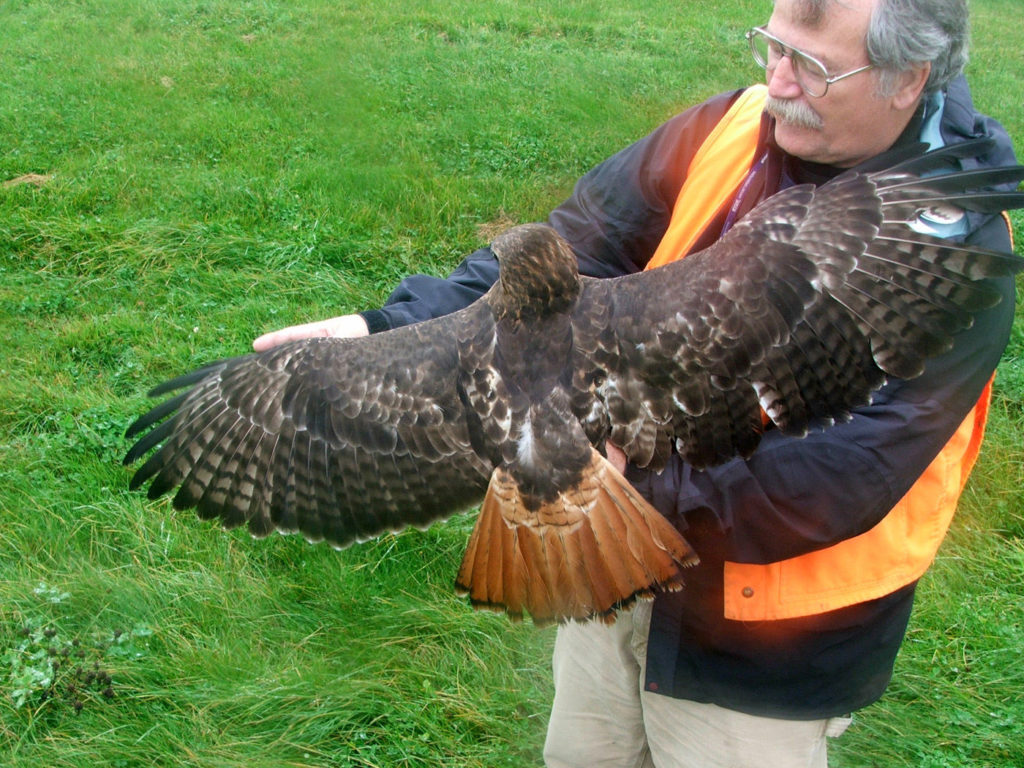Estimated reading time 5 minutes, 35 seconds.
One of the main responsibilities of any airport authority is controlling pesky birds that like to hang around the airfield. As the populations of most North American large bird species rise, so does the corresponding risk to aviation safety.

Traditionally, airport wildlife management has revolved around very practical techniques, including the use of deterrents such as other predatory animals or birds, pyrotechnics and soundwave dispersal techniques.
Over the years, however, bird hazard management has evolved to incorporate scientific principles and is increasingly performed according to a risk-based model. Gary Searing, executive director of Bird Strike Committee Canada, told Skies that airports are most often subjected to large numbers of birds during migration or post-nesting season.
“The abundance of birds is often not affected by the areas near airports, but by breeding habitats many miles away,” explained Searing. “For example, in the Pacific Flyway, Snow Geese arrive in Vancouver all the way from Wrangell Island in Russia and many shorebirds who land there breed in Alaska.”
Traditionally, predatory birds, such as falcons, have been used for deterring other bird species. At some airports, dogs chase away unwelcome avian visitors, having an advantage over falconry in that they can be trained to move according to the handler’s instructions and to hold short of pavement to prevent runway incursions.

“However, dogs cannot access wetland areas as effectively as falconry birds, nor are they as useful in controlling flocks of shorebirds,” said Searing. “While far faster than humans, they also are much slower than falcons and thus do not cover as much ground in the same amount of time.”
Lately, remote-controlled artificial predators have been introduced, including ornithopters (bird-like remote-controlled aircraft with flapping wings) and rotary-winged drones.
“These will likely never have the same effect as a real live predator, but they require far less maintenance and upkeep and are entirely controlled by the handler,” said Searing. However, he pointed out that remotely-controlled aircraft require a stack of permits before they can be used on or near an airport.
Risk-based approach
Broadly defined, risk-based wildlife hazard management is based on identifying wildlife risks at an airport, ranking those risks, developing an approach or plan to mitigate each of them, and implementing the plan by focussing on the current highest-ranked hazards at the airport.
When a risk-based approach to management (including bird hazard management) is introduced, it almost always leads to the implementation of some type of software solution.

“The best software application for bird hazard management comes with a major piece of hardware, the avian radar,” reported Searing. “Accipiter Radar Technologies, an Ontario-based company, has developed an application using radar to detect flying birds up to 13 kilometres away from an airport and to alert the airport when hazards reach a specified level in each sector. This allows wildlife controllers to identify hazardous situations as they develop and focus their activities in these areas rather than driving all around the airport searching for avian hazards.”
On a smaller scale, Falcon Environmental Services, a company based in Quebec and Ontario, has developed an app to assess risk.
“In my opinion, these types of apps should be built into data collection apps which many airports are currently using,” said Searing. “As the data are entered, they should be analyzed and a risk level determined based on the information entered over the previous hour or two. I am not aware of anything like this at the present time, but it would not be difficult to produce. I should also say that there are many approaches to assessing risk. Individual apps should be clear as to which approach they are using and how risk is calculated.”
Under the Canadian Aviation Regulations (CARs), there is a qualifying process to become an airport bird hazard manager. Bird Strike Committee Canada has been actively working to improve this process.
“Currently, Transport Canada has no accreditation process for airport wildlife managers,” noted Searing. “The regulations require individuals conducting wildlife control to be trained in a list of topics once every five years. However, the depth of training is not specified and there is no requirement for any field-level training. More importantly, there is no auditing requirement for individuals. Transport Canada may audit the wildlife management plan, but the wildlife controllers, once they receive their training, are considered to be qualified.”

He added that there are no set qualifications for the trainers, either. That means that a person who has never set foot on an airport could potentially deliver wildlife management training that would be accepted by Transport Canada.
“Many airports do not fully understand the importance or the process of airport wildlife management,” said Searing. “Therefore, education and training is critically important to improving the process and making Canada’s airports as safe as possible for the flying public.”
Mario Pierobon is a safety management consultant and content producer. He is currently working on a research project investigating aircraft ground handling safety.

